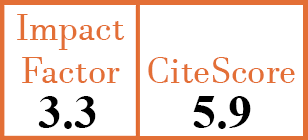Full Papers
ABO blood groups and increased risk for the development of vascular involvement in Behçet's disease
E. Bektas1, A. Büyükdemir2, Y. Yalcinkaya3, B. Artim Esen4, M. Inanc5, A. Gül6
- Department of Internal Medicine, Istanbul Faculty of Medicine, Istanbul University, Istanbul, Turkey. erdmbektas@gmail.com
- Istanbul Faculty of Medicine, Istanbul University, Istanbul, Turkey.
- Division of Rheumatology, Department of Internal Medicine, Istanbul Faculty of Medicine, Istanbul University, Istanbul, Turkey.
- Division of Rheumatology, Department of Internal Medicine, Istanbul Faculty of Medicine, Istanbul University, Istanbul, Turkey.
- Division of Rheumatology, Department of Internal Medicine, Istanbul Faculty of Medicine, Istanbul University, Istanbul, Turkey.
- Division of Rheumatology, Department of Internal Medicine, Istanbul Faculty of Medicine, Istanbul University, Istanbul, Turkey. agul@istanbul.edu.tr
CER17757
2024 Vol.42, N°10
PI 2071, PF 2075
Full Papers
Free to view
(click on article PDF icon to read the article)
PMID: 39404478 [PubMed]
Received: 09/04/2024
Accepted : 18/09/2024
In Press: 15/10/2024
Published: 15/10/2024
Abstract
OBJECTIVES:
Inflammatory endothelial activation is a prominent feature of vascular involvement in Behçet’s disease (BD), which is usually accompanied by a thrombotic tendency. Recent studies suggest an association between ABO blood groups and thrombotic vascular disease in those carrying non-O (A, B, and AB) groups. This study aimed to analyse the contribution of ABO blood groups to the vascular involvement in BD.
METHODS:
In this retrospective study, BD patients with available ABO blood group data and meeting the ISG criteria were included in the study. The presence of vascular involvement, its clinical characteristics, and the data about other manifestations were recorded from the patient charts.
RESULTS:
This study was conducted in 411 patients; 143 (34.8%) were carrying O and 268 (65.2%) were carrying non-O groups. The vascular involvement was significantly more frequent and the risk for overall vascular and venous events was up to 2-fold higher in the patients with non-O groups. After adjustments for age, sex, and comorbidities, the risk for arterial disease was also found to be increased in association with non-O groups. ABO blood groups were shown to be independent risk factors for vascular BD by multiple regression models based on known predisposing factors. Compared with other non-O blood groups, the patients carrying blood group B had a higher risk for vascular events.
CONCLUSIONS:
The results of this preliminary study show the potential contribution of ABO blood groups to the vascular-BD phenotype and suggest an increased risk for vascular BD in association with non-O blood groups.



